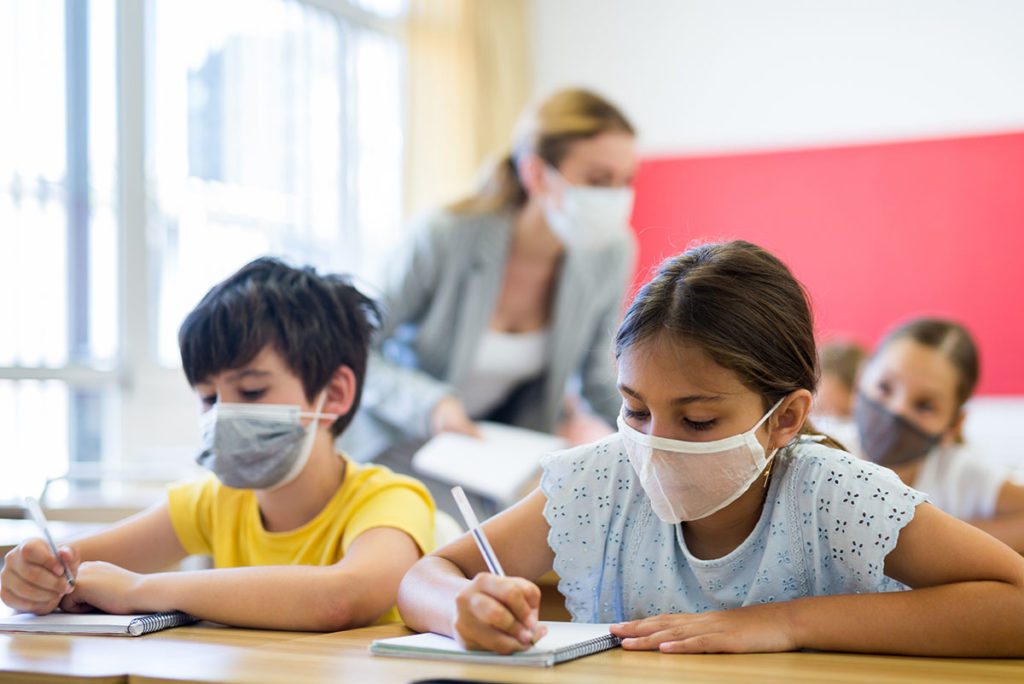The return to school in the midst of the global COVID-19 pandemic has created challenges for administrators who are charged with implementing the strongest safety measures for their students. Professor Qiang He and Assistant Professor Shuai Li studied the potential airborne transmission of the virus and the risks under different epidemiological scenarios.
Their latest collaborative research included scenario-based analyses to examine the relationship between the risk for airborne infection and different intervention strategies in 111,485 public and private schools in the US. They evaluated the impact of different intervention strategies including increased ventilation, air filtration, and hybrid learning, which could help schools and governments understand the risk levels in many different airborne infection scenarios.

Qiang He, left, and Shuai Li
The study used two epidemiological scenarios to predict both the long- and short-term risks under different intervention strategies. They also performed Monte Carlo simulation and sensitivity analysis to examine the impacts of various school characteristics and epidemic situation.
“We anticipate that the results will help schools and governments understand the infection risks in school built environments and impacts of possible interventions such as improved air filtration, better ventilation, and hybrid learning” said Li. “Even though we focused on COVID-19 and its variants, the framework of this study can be extended to other infectious diseases within other indoor environments in other countries.”
They also found that the effectiveness of intervention strategies may vary with student age and season and, thus, individual schools may need to adopt variable and combined intervention strategies over the long term when considering the capacity of school systems.
The data and insights from their study can help empower schools and governments to understand their infection risk and design specific strategies based on conditions of the school and progression of the epidemic, but the scope of the findings are not just helpful for creating protocols and policies in the US.
“The findings in this study can provide insights for other countries too,” said He. “Even though infection risks vary significantly across different countries due to population sizes, disease prevalence, and infection-hospitalization ratios, and other factors, this study can provide a baseline for understanding.”
